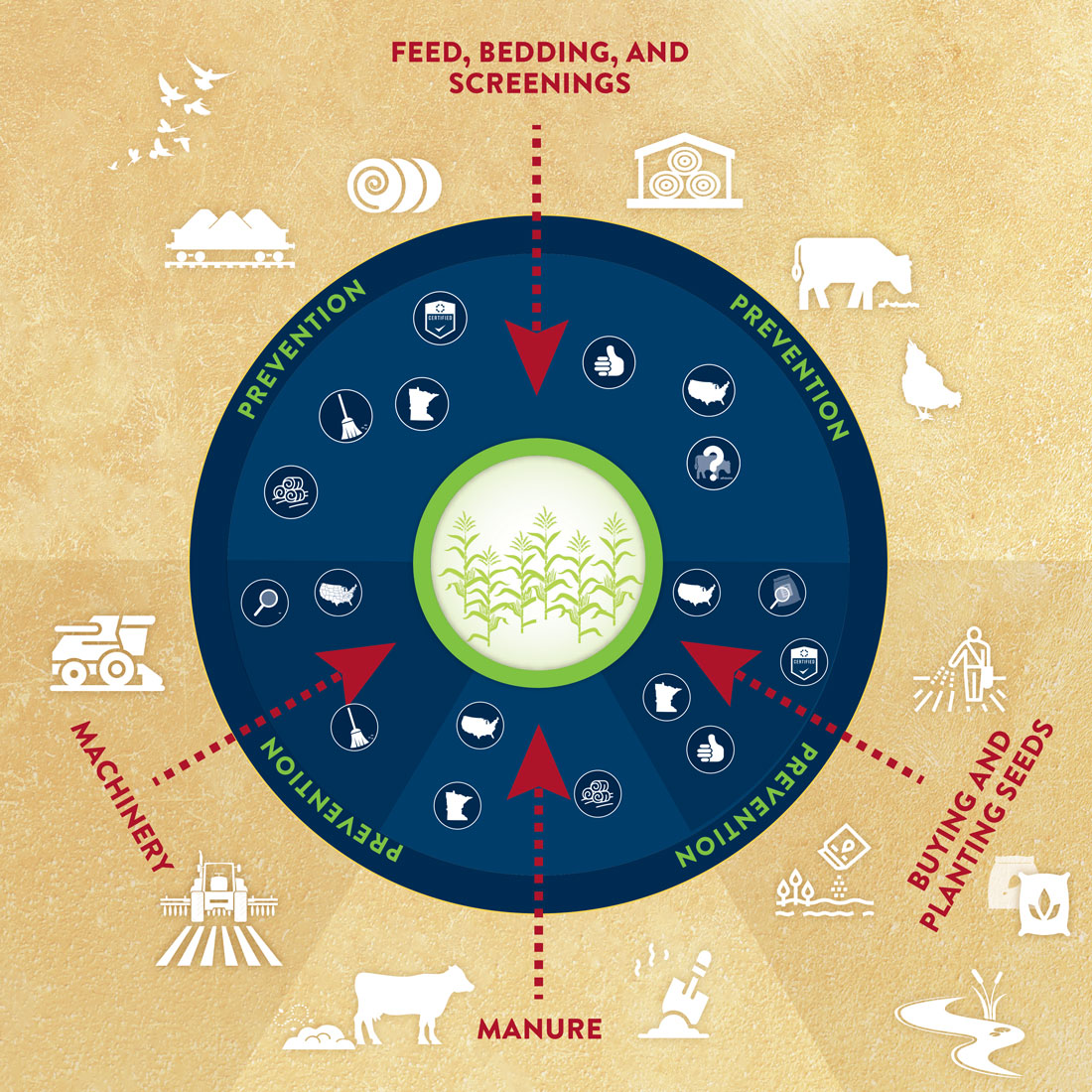Return to Amaranth Aware main menu
Where have we found Palmer amaranth in Minnesota?
Online Map of Minnesota Palmer Amaranth Finds
How is Palmer amaranth coming into Minnesota?

Palmer amaranth in commercial feed pilot program
The goal of this pilot program is to better understand the risk for Palmer amaranth in feed pathways, help find solutions to prevent its spread, and to protect agricultural operations throughout the state.
The Minnesota Department of Agriculture (MDA) regulates noxious weeds in animal feed using multiple tools:
- The Minnesota Commercial Feed Law, which prohibits the sale of adulterated feed.
- Minnesota’s Noxious Weed Law, which prohibits the transportation, propagation, or sale of this plant.
- Minnesota Seed Law and Screenings Act, which prohibits it in seed or screenings used as feed.
At this time, the MDA recommends following the USDA standard for Niger seed devitalization as a heat treatment to devitalize weed seeds including Palmer amaranth in feed or feed ingredients.
Traceback investigations in Minnesota have identified millet and sunflowers as possible higher risk commodities for the spread of Palmer amaranth. This pilot program will focus on these whole grain commodities by collecting commercial feed and feed ingredient samples from feed manufacturing facilities. Fifteen to thirty samples will be collected from late summer into fall 2023 as part of this pilot program.
For more details, reference the Palmer Amaranth in Commercial Feed Pilot Program
The MDA will evaluate the data and provide a summary report of the findings from this pilot program to help increase understanding about viable Palmer amaranth in commercial feed or feed ingredients. The MDA will collaborate with stakeholders to determine appropriate mechanisms for continued protection of Minnesota’s agricultural resources.

